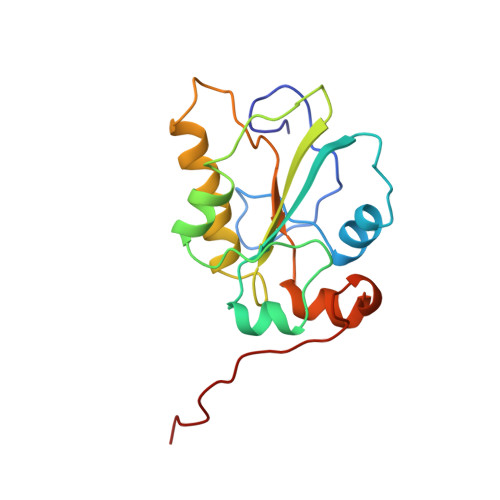Crystal structure of the catalytic domain of the human cell cycle control phosphatase, Cdc25A.
Fauman, E.B., Cogswell, J.P., Lovejoy, B., Rocque, W.J., Holmes, W., Montana, V.G., Piwnica-Worms, H., Rink, M.J., Saper, M.A.(1998) Cell 93: 617-625
- PubMed: 9604936
- DOI: https://doi.org/10.1016/s0092-8674(00)81190-3
- Primary Citation of Related Structures:
1C25 - PubMed Abstract:
Cdc25 phosphatases activate the cell division kinases throughout the cell cycle. The 2.3 A structure of the human Cdc25A catalytic domain reveals a small alpha/beta domain with a fold unlike previously described phosphatase structures but identical to rhodanese, a sulfur-transfer protein. Only the active-site loop, containing the Cys-(X)5-Arg motif, shows similarity to the tyrosine phosphatases. In some crystals, the catalytic Cys-430 forms a disulfide bond with the invariant Cys-384, suggesting that Cdc25 may be self-inhibited during oxidative stress. Asp-383, previously proposed to be the general acid, instead serves a structural role, forming a conserved buried salt-bridge. We propose that Glu-431 may act as a general acid. Structure-based alignments suggest that the noncatalytic domain of the MAP kinase phosphatases will share this topology, as will ACR2, a eukaryotic arsenical resistance protein.
Organizational Affiliation:
Department of Biological Chemistry, The University of Michigan, Ann Arbor 48109-1055, USA. fauman@umich.edu














